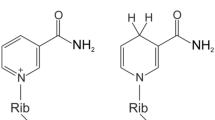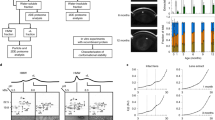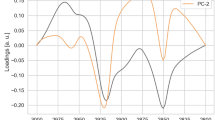Abstract
A PROTEIN-FREE extract of the lens of man and other primates contains a fluorescent compound which is absent from the lens of the usual domestic and laboratory animal. This compound, detected on paper chromatograms by its reaction with ninhydrin, was believed to be a peptide1. The protein free extract of the lens of man and certain other primates has been found to contain one or more fluorescent yellow pigments2, and I have now isolated from the human lens the O-β-D-glucoside of L-3-hydroxykynurenine (Fig. 1), which is yellow and highly fluorescent. This glucoside has also been found in the silkworm, Bombyx mori3.
This is a preview of subscription content, access via your institution
Access options
Subscribe to this journal
Receive 51 print issues and online access
$199.00 per year
only $3.90 per issue
Buy this article
- Purchase on Springer Link
- Instant access to full article PDF
Prices may be subject to local taxes which are calculated during checkout
Similar content being viewed by others
References
François, J., Rabaey, M., and Recoulés, N., Amer. Med. Assoc. Arch. Ophthal., 65, 118 (1961).
Cooper, G. F., and Robson, J. G., J. Physiol., 203, 403 (1969).
Linzen, B., and Ishiguro, I., Z. Naturforsch., 21 B, 132 (1966).
Watanabe, M., Tamura, Z., and Okada, M., Chem. Pharm. Bull., Tokyo, 18, 285 (1970).
Smith, I. (ed.), Chromatographic and Electrophoretic Techniques, 1, third ed. (Heinemann, London, 1969).
Dalgleish, C. E., Biochem. J., 52, 3 (1952).
Dawson, R. M. C., Elliot, D. C., Elliot, W. H., and Jones, K. M., Data for Biochemical Research, second ed. (Oxford University Press, 1969).
Knox, W. E., in Methods in Enzymology, 11, 249 (edit. by Colowick and Kaplan) (Academic Press, London and New York, 1955).
Slein, M. N., in Methods of Enzymatic Analysis (edit. by Bergmeyer, H.-U.), 117 (Academic Press, London and New York, 1963).
Parke, D. V., The Biochemistry of Foreign Compounds, 77 (Pergamon, Oxford, 1968).
Brunet, P. C. J., Endeavour, 26, 68 (1967).
Butenandt, A., and Schäfer, W., in Recent Progress in the Chemistry of Natural and Synthetic Colouring Matters (edit. by Gore), 13 (Academic Press, London and New York, 1962).
Pirie, A., Invest. Ophthal., 634 (1968).
Author information
Authors and Affiliations
Rights and permissions
About this article
Cite this article
VAN HEYNINGEN, R. Fluorescent Glucoside in the Human Lens. Nature 230, 393–394 (1971). https://doi.org/10.1038/230393a0
Received:
Issue Date:
DOI: https://doi.org/10.1038/230393a0
This article is cited by
-
Most abundant metabolites in tissues of freshwater fish pike-perch (Sander lucioperca)
Scientific Reports (2020)
-
Quantitative metabolomic analysis of changes in the lens and aqueous humor under development of age-related nuclear cataract
Metabolomics (2019)
-
Tryptophan and Non-Tryptophan Fluorescence of the Eye Lens Proteins Provides Diagnostics of Cataract at the Molecular Level
Scientific Reports (2017)
-
Influence of medium viscosity on photophysical properties of kynurenic acid and kynurenine yellow
Russian Chemical Bulletin (2017)
-
Antioxidative properties of nitroxyl radicals and hydroxyamines in reactions with triplet and deaminated kynurenine
Russian Chemical Bulletin (2010)
Comments
By submitting a comment you agree to abide by our Terms and Community Guidelines. If you find something abusive or that does not comply with our terms or guidelines please flag it as inappropriate.



